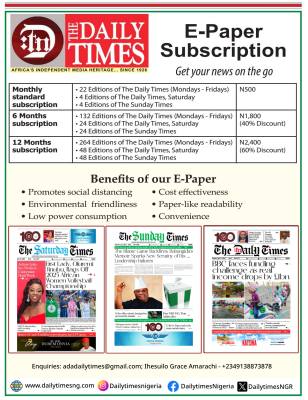History of all 8 economic recession that has rocked Nigeria

Nigeria has plunged into its worst economic recession in thirty-three years. This is the second under the administration of Muhammadu Buhari as a civilian president and third in total as a head of state, Daily Times reports.
The National Bureau of Economic Research (NBER) defines a recession as “a significant decline in economic activity spread across the economy, lasting more than a few months, normally visible in the real gross domestic product (GDP), real income, employment, industrial production, and wholesale-retail sales.”
A recession is also said to be when businesses cease to expand, the GDP diminishes for two consecutive quarters, the rate of unemployment rises, and housing prices decline.
Below are the major eight economic recessions that have rocked the Nigerian economy since independence.
1. Gen. Yakubu Gowon, 1967: Nigeria was torn by the continent’s most violent tribal conflict – the Biafra War of 1967 to 1970, in which about a million people died. In a bid to revitalise the nation’s economy, Nigeria put its faith in oil, earning $100 billion in a decade. But oil prices crashed, and Nigeria found itself with a $21 billion foreign debt, an urban population dependent on foreign imports and a rural population that could no longer feed the nation. GDP plunged to a negative -15.74% under General Gowon.
2. Late Gen. Murtala Muhammed, 1975: Murtala was a man loved by almost every Nigerian in his time. Although, he was not directly involved in the coup that brought him to power. He showed meaningful signs that he meant well for Nigeria.
Murtala Muhammad singled out inflation as the greatest danger to the economy, he was determined to reduce the money supply that had been swollen by government expenditures on public works. Murtala Muhammad also announced that his government would encourage the rapid expansion of the private sector into areas dominated by public corporations.
He saw a drop in GDP of -5.23%, an unfortunate situation he was predicted to overturn before his assassination.
3. Maj. Gen. Olusegun Obasanjo, 1978: Inflation during the 1970s was at 34%. To deal with Nigeria’s economic problems, Obasanjo put up measures to reduce public expenditure. Obasanjo proposed to reduce government expenditure by a sixth in his 1976 budget, halting capital projects to spend on education, health, housing, and agriculture. He also set up an anti-inflation task force, and within a year of Obasanjo taking office, inflation had fallen to 30%. The Obasanjo-led military government later oversaw a drop in the nation’s GDP to -5.765% in 1978. He left office in 1979.
4. Late Alhaji Shehu Shagari, 1981: This economic recession witnessed a drop in GDP to -13.13%. it was predominantly due to a drop in oil revenues when a worldwide oversupply of oil brought prices down. It led to the ousting of President Shehu Shagari’s administration by a junta of young generals. A military regime led by Maj. Gen. Muhammadu Buhari took over.
5. Maj. Gen. Muhammadu Buhari, 1983: The ‘corruption chorus’ that marked his ascension to power faded in no time. The regime saw a worse economic situation than the civilian administration he ousted. Studies showed that the removal of Shehu Shagari, a democratically elected government, fueled the economic recession.
According to a research paper in the August 2018 edition of the Central Bank of Nigeria (CBN) Journal of applied statistics, “The economy was already on the path of recovery before the military coup of 1983; output of goods and services were improving as the economy was recovering from recession,”
A journalist narrated his ordeal, “In a matter of months, mothers were selling their jewelry to send their children to school. Within months, there simply was NO FOOD. The government gathered the little there was and restricted purchases. Whether you were 100 or ONE in your family, every household had a card with which they went to military manned cooperatives to purchase rationed, “essential commodities”. These included Rice, Beans, Yam, Bread, Milk, Sugar, and so on. A lot of children were simply pulled out of schools because feeding was priority number ONE! Going to school became a luxury, even for middle-class families. People suddenly remembered they had British and American passports, and simply left the country!”
The GDP at this time fell enormously to -10.92%.
6. Gen. Ibrahim Babangida, 1993: Nigeria’s economy saw a negative growth of the GDP to -2.04%.
7. President Muhammadu Buhari, 2016 & 2020: Buhari remains the only Nigerian leader to have seen a hat trick of economic recession both as a military dictator and as a civilian president.
The 2016 recession was characterized by a drop in GDP to -1.62% after two consecutive quarters of negative growth. Global crude oil prices dropped, resulting in forex reserves also dropping, due to the country’s over-reliance on oil revenue. Non-oil revenue saw a drop too. Also, the nation failed to devalue the Naira which led to the shortage of forex earnings to fund imports. It was Nigeria’s worse economic decline since 1987. Little did we know, a much greater decline is imminent.
The 2020 economic recession which saw a drop in GDP to -3.62% was largely fueled by low stock performance, service sector hit by COVID-19, supply chain disruptions, drop in oil price, drop in diaspora remittances, amongst other factors.
Conclusion
Recessions come and go and some are more severe and last longer than others. But history shows that (so far) recessions invariably end, and when they do, a period of economic recovery follows.
READ ALSO: Senate President denies N2 billion bribe allegation to confirm INEC chairman







